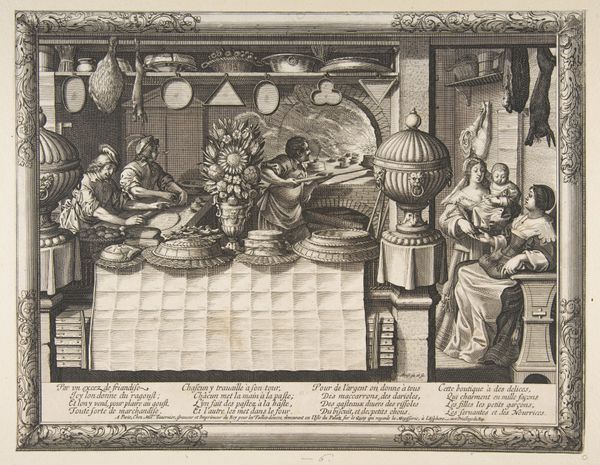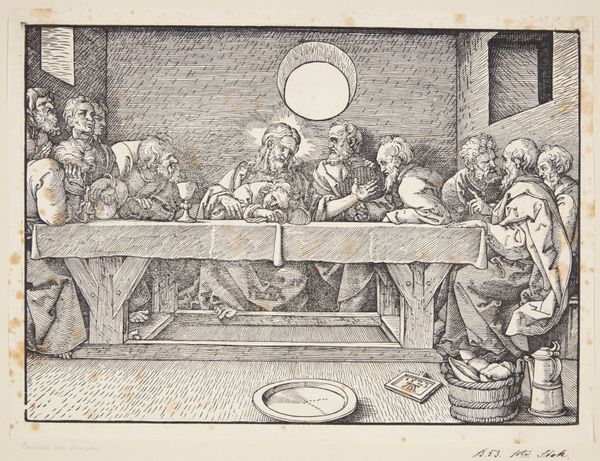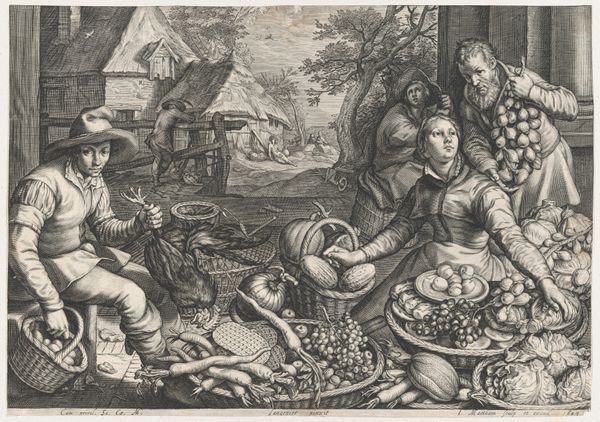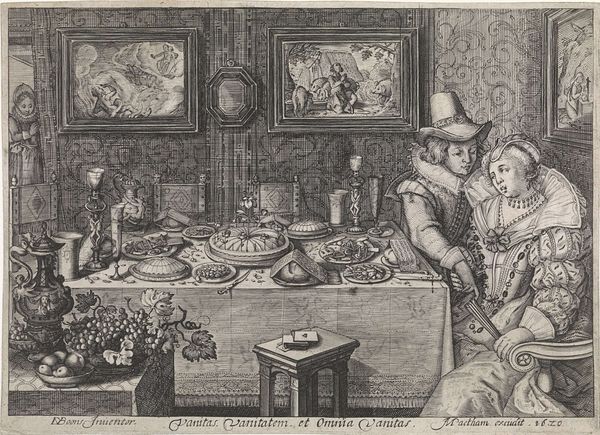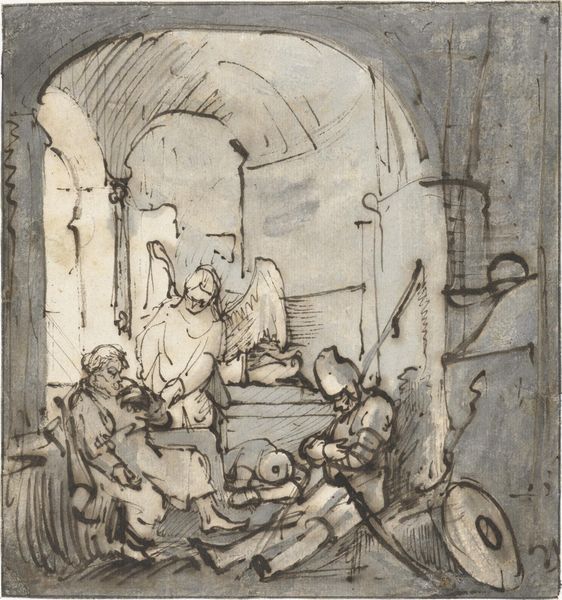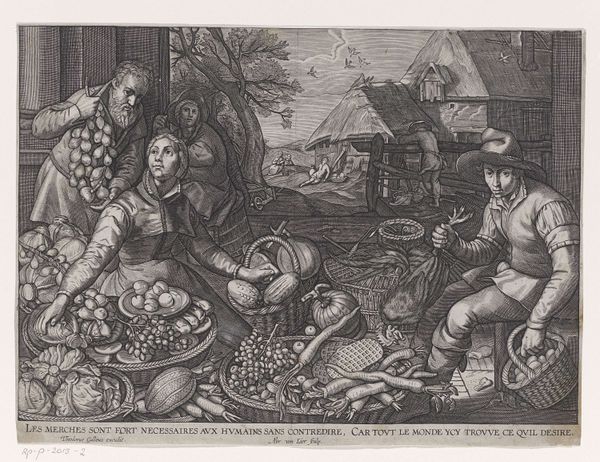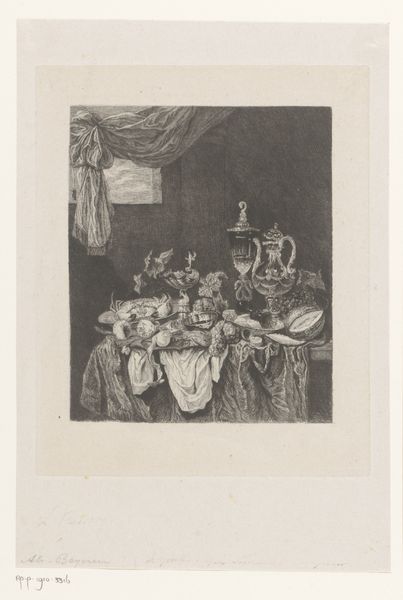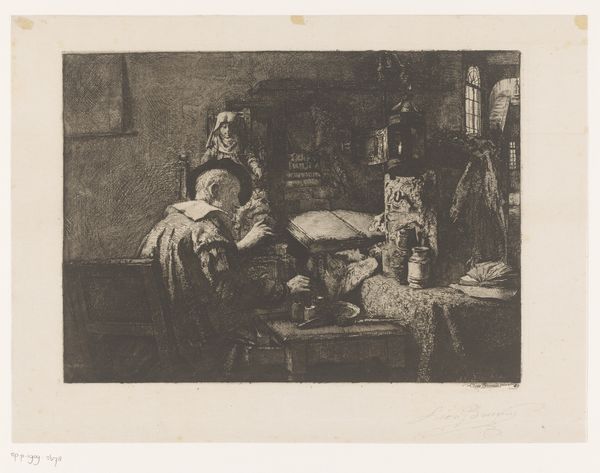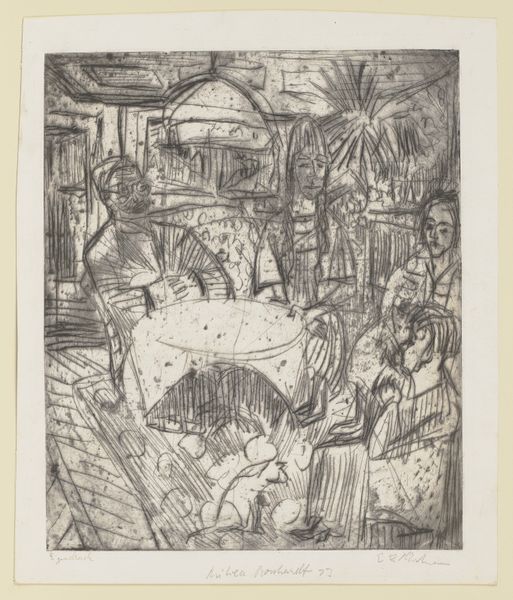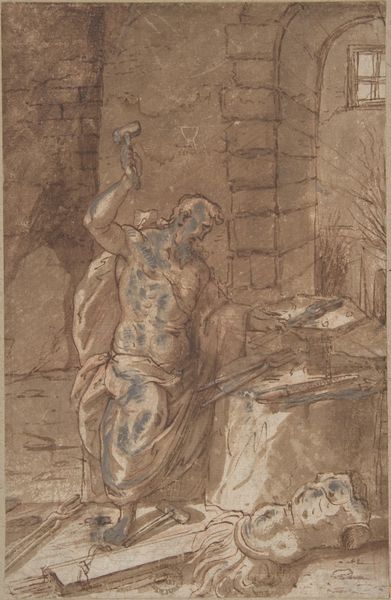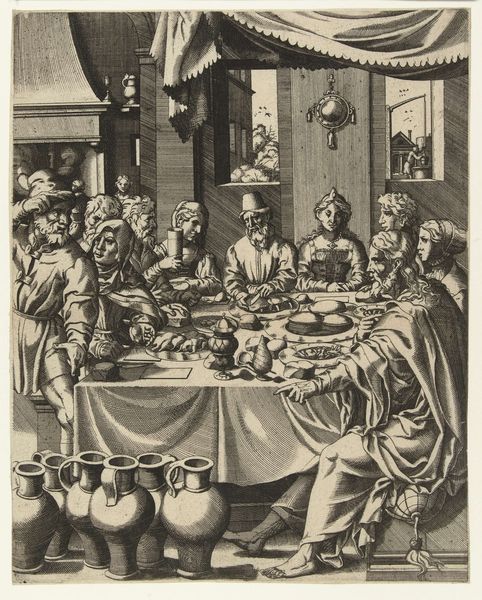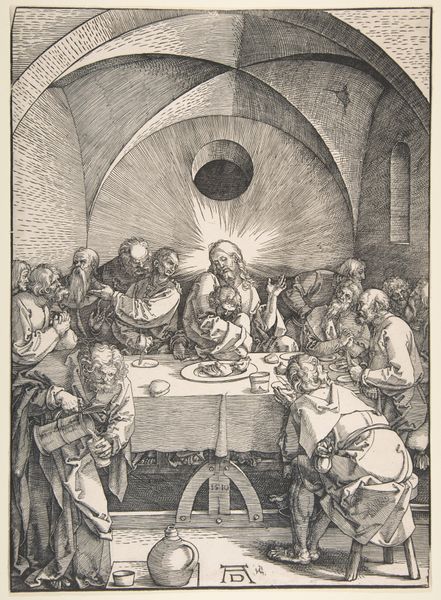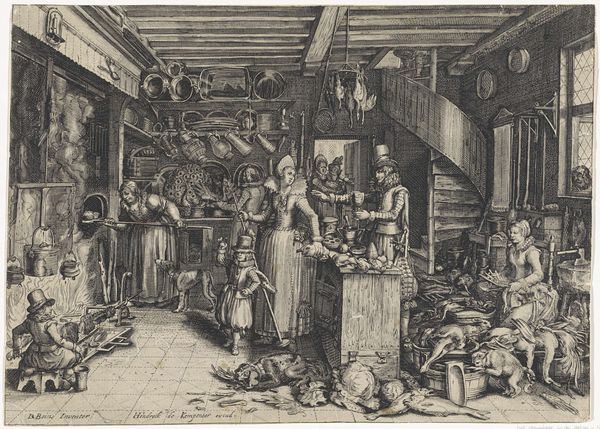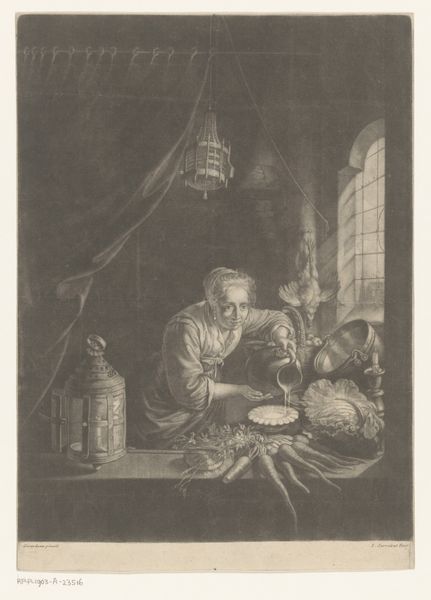
painting, oil-paint, photography
#
baroque
#
painting
#
oil-paint
#
photography
#
oil painting
Copyright: Public domain
Curator: Looking at this banquet still life by Clara Peeters, painted around 1640, I am struck by the ambition of it. We call it, "Still Life with Crab, Shrimps and Lobster," and it's part of the collection here at the Museum of Fine Arts, Houston. Editor: Wow. My immediate thought? Someone was having a feast! It feels rich, almost decadent. A symphony of shellfish under very moody lighting! It's so theatrical. I want to reach out and grab one of those shrimps. Are they really that tiny? Curator: It certainly depicts abundance. Peeters was among the first generation of female still-life painters in the Netherlands. She not only excelled at accurately portraying textures and surfaces with oil paint, but she also insinuated these works into the art market. Editor: Do you think she's making a statement? About being a woman in the food chain, pardon the pun, or is it just, like, 'I'm good at painting shellfish!'? Curator: It's multilayered. On one level, the inclusion of these rare, imported items signal economic and political power. This display of luxury projects an aura of wealth. Yet, these expensive foods, captured on canvas by a woman artist, simultaneously reinforced and challenged social norms and status at the time. Editor: Right. But you know, I am fixated on how everything looks sort of piled, crowded even! The food is sumptuous, but almost...morbidly sumptuous. What do you think she is saying about abundance, or life itself, by piling up all these edible treasures? It's like a beautiful, slightly disturbing cornucopia! Curator: Perhaps Peeters uses the vanitas tradition, embedding these elements as a commentary on life’s impermanence. The opulent spread is rendered through skilled realism. Even at close range, one gets a vivid sense of detail – the glistening glaze, the fragile eggshells, the feathery shrimp antennae. This type of close observation really demands the viewer's attention. Editor: Absolutely. But beyond technical virtuosity, there's an underlying tension. This isn’t just about food; it’s about how we display, consume, and maybe even waste, at times, which feels, well, timeless, if you ask me. Curator: A valuable consideration to close us off. What seems initially to be just a still life provides complex social insights, raising fundamental questions concerning consumer culture, artistic authorship, and enduring relevance. Editor: Yes! A feast for the eyes and the mind! I will keep these ideas of value, abundance, and ephemerality, in mind!
Comments
No comments
Be the first to comment and join the conversation on the ultimate creative platform.

